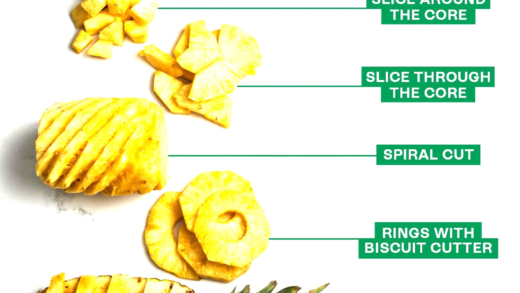Cat purring is a complex behavior with various meanings. While it often signifies happiness and contentment, it can also indicate distress or a need for communication. Understanding the mechanics, benefits, and variations of purring helps owners provide better care for their feline friends.
How Do Cats Purr: The Mechanics Behind the Sound
Cat purring is a fascinating phenomenon that involves a unique sound produced by felines. At its core, cat purring occurs when a cat rapidly contracts and relaxes its laryngeal muscles. This action causes a sudden narrowing of the airway, resulting in a distinct vibrating sound. The process is not fully understood, but researchers believe that purring is produced during both inhalation and exhalation, which makes it quite different from other vocalizations.
Interestingly, the frequency of the purring sound typically ranges from 25 to 150 Hertz. This frequency range is significant because it has been linked to promoting healing and reducing pain in cats. In fact, some studies suggest that the vibrations from purring can stimulate the production of growth factors and aid in tissue regeneration. Understanding how cats purr not only satisfies curiosity but also highlights the potential health benefits of this soothing sound.
Why Do Cats Purr When They’re Happy: The Joyful Sound
When cats purr, it often signifies happiness and contentment. Many cat owners have experienced the delightful moment when their furry friend curls up on their lap, purring softly as they relax. This joyful sound is typically associated with positive experiences, such as being petted, playing, or simply enjoying a cozy environment.
The connection between purring and happiness in cats is evident during social interactions. For example, mother cats often purr while nursing their kittens, creating a calming atmosphere that fosters bonding. This behavior not only reassures the kittens but also strengthens their emotional connection. Recognizing that cat purring is a joyful sound can enhance the bond between owners and their pets, creating a more fulfilling relationship.
Other Reasons for Cat Purring: More Than Just Happiness
While many associate cat purring solely with happiness, there are several other reasons why cats may engage in this behavior. Purring can serve as a coping mechanism for cats in stressful situations. For instance, a cat may purr when it feels threatened, anxious, or even in pain. In such cases, purring may act as a self-soothing mechanism, helping the cat to calm down and cope with the discomfort.
Additionally, cats may purr to communicate with their owners or other animals. This form of communication can vary in tone and intensity, depending on the situation. For example, a cat might purr softly when seeking attention, or it could produce a more urgent purr when feeling unwell. Understanding that purring can signify more than just happiness is crucial for cat owners, as it can help them identify when their pet may need assistance or care.
The Physical and Emotional Benefits of Purring for Cats
Cat purring offers numerous physical and emotional benefits for felines. The soothing vibrations produced during purring have been linked to healing processes. Research indicates that the frequency of cat purring, typically between 25 and 150 Hertz, can promote tissue regeneration and alleviate pain. Here are some notable benefits:
- Healing Effects: Purring stimulates the production of growth factors, aiding in recovery from injuries.
- Stress Reduction: The calming nature of purring helps to lower stress levels in cats, contributing to overall emotional well-being.
- Pain Relief: The vibrations can act as a natural painkiller, making it easier for cats to cope with discomfort.
Moreover, purring creates a sense of comfort. It can strengthen the bond between cats and their owners, as the sound often signifies trust and affection. Understanding these benefits can encourage owners to appreciate their cat’s purring as a vital part of their health and happiness.
Purring as a Sign of Distress or Illness: What to Look For
While cat purring is often associated with happiness, it can also signal distress or illness. Recognizing when purring indicates something is wrong is crucial for cat owners. Here are key points to consider:
- Context Matters: Observe the situation. If a cat purrs while hiding or in an unusual posture, it may be experiencing discomfort.
- Sound Variation: A distressed purr might sound different—more urgent or strained—compared to a relaxed, happy purr.
- Behavior Changes: Look for other signs of distress, such as changes in appetite, lethargy, or aggression, alongside purring.
Being attentive to these signals allows owners to respond promptly, ensuring their cat receives the necessary care when needed. By understanding the nuances of purring, owners can better support their feline companions.
Purring in Cat Communication: How Cats Use This Sound
Purring plays a significant role in cat communication. Cats utilize this sound not only to express contentment but also to convey various messages to their owners and other animals. Here are some ways cats communicate through purring:
- Seeking Attention: A soft purr can signal a cat’s desire for affection or interaction from its owner.
- Calming Other Cats: Mother cats purr to soothe their kittens, reinforcing their bond and creating a peaceful environment.
- Indicating Discomfort: In some cases, cats may purr to signal they are unwell or stressed, prompting caregivers to investigate.
Understanding the role of purring in feline interactions enhances the bond between cats and their owners. By recognizing what different purring sounds mean, owners can respond appropriately and foster a supportive environment for their pets.
Do All Cats Purr the Same Way? Variations in Purring Styles
Not all cats purr alike. The sound and style of cat purring can vary significantly between different breeds and even among individual cats. These differences can be influenced by factors such as size, health, and personality. For instance, larger breeds like the Maine Coon may have a deeper, more resonant purr compared to smaller cats like the Siamese, whose purr can be lighter and more melodic.
Additionally, some cats may have distinct purring patterns that reflect their unique communication styles. Here are a few examples of how purring differs:
- Volume: Some cats have louder purrs that can be heard across the room, while others may purr softly, almost inaudibly.
- Tone: The tone can range from a soothing, deep rumble to a high-pitched trill, often reflecting the cat’s mood.
- Duration: The length of time a cat purrs can also vary; some may purr continuously, while others may do so in short bursts.
Understanding these variations can help cat owners appreciate the individuality of their pets and better respond to their needs. Recognizing the subtle differences in a cat’s purring can enhance the owner-pet bond and contribute to a more fulfilling relationship.
Interpreting Cat Purring for Better Care
To provide the best care for your feline friend, it’s essential to learn how to interpret cat purring. Understanding the context and nuances of a cat’s purr can guide owners in meeting their pets’ emotional and physical needs. Here are some key points to consider:
- Observe the Environment: The setting in which a cat purrs can offer clues. Is it during a relaxed moment, or is the cat in a stressful situation?
- Combine with Body Language: Pay attention to the cat’s body language. A relaxed posture alongside a purr indicates contentment, while a tense body may suggest distress.
- Responding to Purring: If a cat purrs while seeking attention, it likely wants interaction or affection. Conversely, if it purrs while hiding, it might need reassurance or help.
By learning to interpret purring effectively, owners can enhance their pet care skills, ensuring their cats feel loved, safe, and understood. This knowledge fosters a stronger bond and a healthier, happier cat.





Comments are closed.